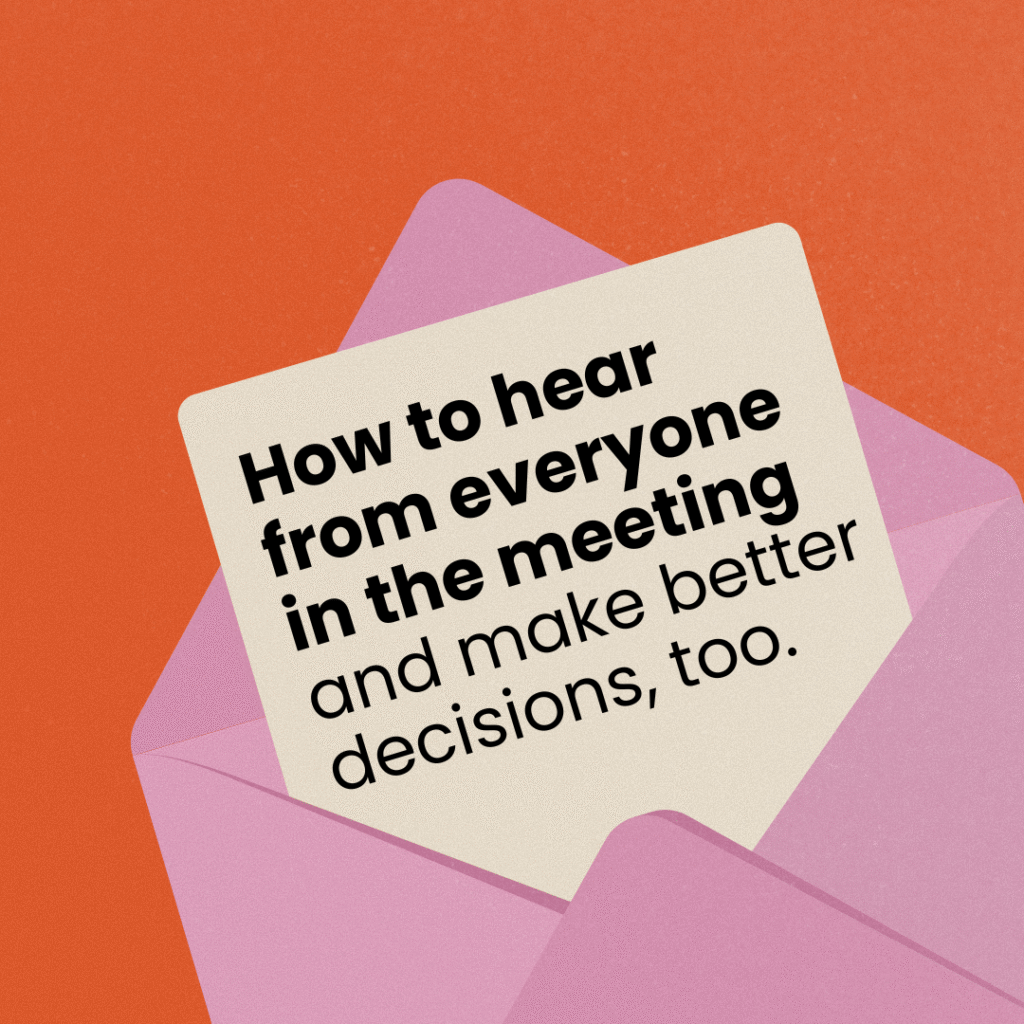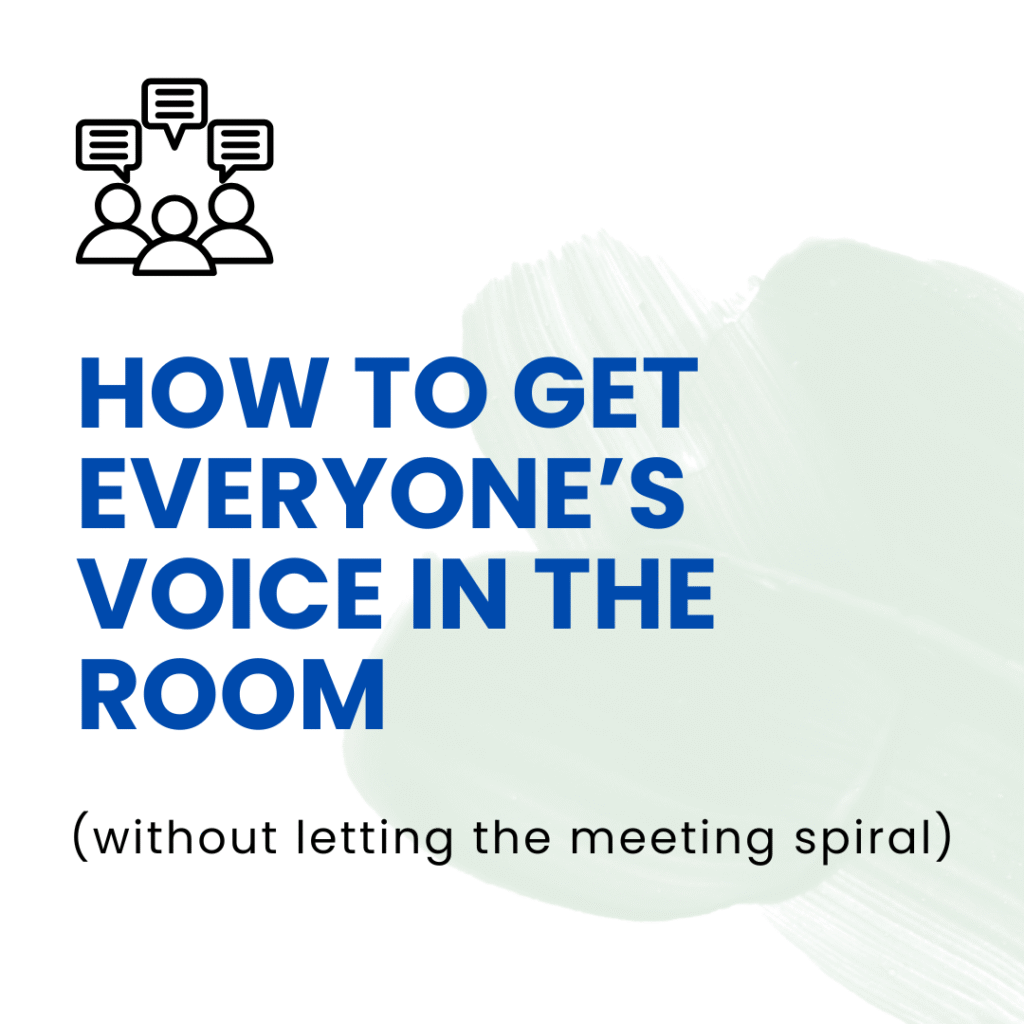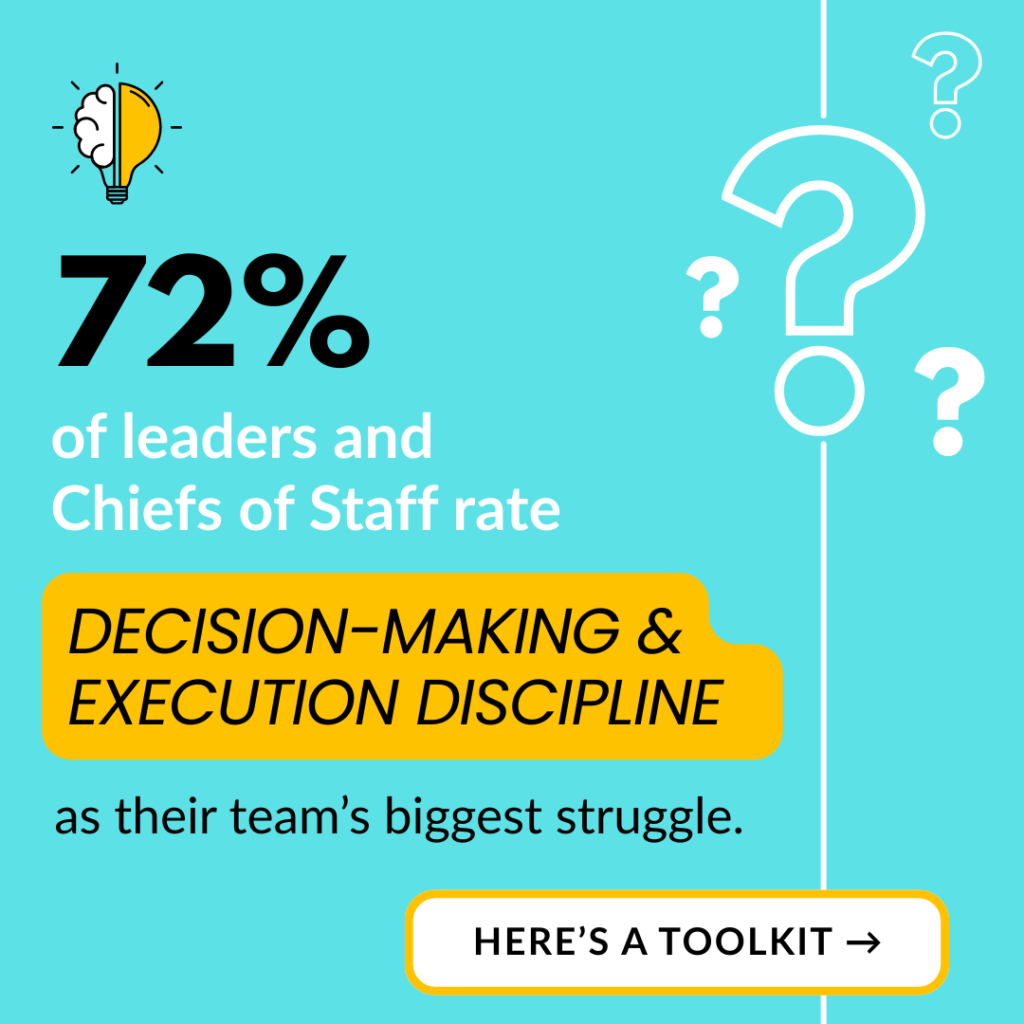Not all decisions deserve the same weight—or the same amount of meeting time.
One of the most overlooked skills of effective leadership teams is knowing how to right-size decisions: matching the level of discussion and urgency to what’s truly at stake.
If you’re spending as much time debating t-shirt colors as whether to close an office, something’s off.
In this post, we’ll cover simple ways to calibrate your decision-making—so big calls get the attention they deserve, and small ones stop slowing you down.
1. Clarify Decision Ownership
Ask yourself: Who should make this decision?
If the team’s leader isn’t willing to support whatever outcome the team may reach, then the leader (or subject-matter expert) should make the decision—not the team. However, the team’s input may still be valuable. In that case, try framing it like this:
“I need to make a decision for our team. I’d like to hear a few quick perspectives to make sure I’ve got the full picture. If a clear answer emerges, great. If not, I’ll take it all in and make the decision.”
2. Right-Size the Level of Discussion
Before opening the floor, draw this 2-axis grid on a whiteboard or paper. Ask each team member to silently assess where the decision falls:
- X-axis: Reversibility (1 = Easy to Reverse, 5 = Hard to Reverse)
- Y-axis: Impact (1 = Low Impact, 5 = High Impact)
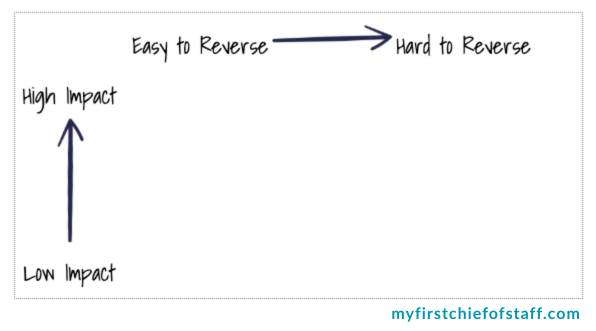
Have each person place a dot on the grid, then share their reasoning behind their rating on each axis. This silent reflection helps avoid groupthink and surfaces diverse perspectives.
3. Questions to Help Assess Impact
If the team struggles to assess impact, invite them to silently consider:
- How many people will this affect?
- How long will the effects last?
- Does it affect our customers, financials, or strategy?
- What’s the risk of getting it wrong?
- Will this change how we operate or set a precedent?
4. Interpret the Results
Once all dots are plotted, identify which quadrant the decision falls into. Use the guidance below to match the discussion depth to the decision type:
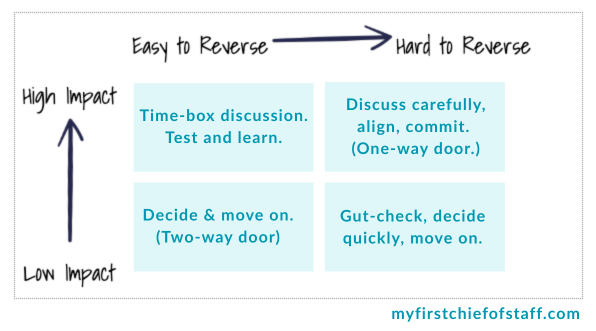
- Lower Impact + Easier to Reverse → Decide and move on. (Two-way door.)
- Lower Impact + Harder to Reverse → Gut-check, decide quickly, and move on.
- Higher Impact + Easier to Reverse → Time-box discussion. Test and learn.
- Higher Impact + Harder to Reverse → Discuss carefully, align, and commit. (One-way door.)

